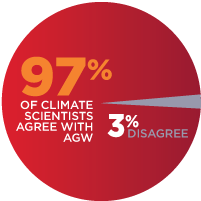Hallmarks of science
These Hallmarks are indicators of science that is being done properly. Collectively, they characterize the essential features of the scientific process – features that mean we can trust scientific outcomes, even though they are the products of humans with the normal individual human failings.
The remarkable successes of the natural sciences are due, not to a uniquely rational scientific method, but to the vast range of “helps” to inquiry devised by generations of scientists to overcome natural human limitations.
Susan Haack, British philosopher, Defending Science – within reason (2007)
Use these links to go to more information about the hallmarks of science. And compare them with the Red Flags that can tell you when someone is peddling bogus science.
| Science uses models to explain aspects of the real world. | Scientists try to explain aspects of the real world by comparing them with models that are based on familiar mechanisms. Scientific models must be testable and they are accepted by scientists only after they have been tested in the real world. |
| Scientific models are falsifiable | For a model to be regarded as scientific, there must be some way of testing whether it is false. A model remains in contention as long as no falsifying evidence appears from such tests. |
| Scientific models are tested by making predictions and checking them against real world data. | Real-world testing of models guards against wishful thinking. A scientific model is accepted as valid only after it is tested against data from the real world and the evidence supports it. Scientists have most confidence in models that are supported by multiple independent lines of evidence. |
| Science uses controlled experiments to test models. | Experiments are used to collect data under controlled conditions. |
| Science uses observation to test models | Where conditions can’t be controlled, scientists can gather data by observing clues to past events or phenomena occurring within unfolding events. |
| Science uses randomised controlled trials to test models | Randomized controlled trials are used in statistical studies of populations. The random selection process and the ability to ‘double-blind’ the participants mean that non-experimental variables can be neutralized if they cannot be controlled. |
| Science quantifies the uncertainty in its data and conclusions | Every scientific measurement must include an indication of its margin of error. |
| Science discusses alternative models and interpretations | Scientists must actively address alternatives to their own preferred models. A scientific model is valid only if alternative models have been considered, tested and shown to be wrong. |
| Science is a collective enterprise: its models are cumulative, interconnected and coherent | Every scientific model is built up through the collaboration of the scientific community. Those models which survive do so because they fit into and consolidate the fabric of scientific knowledge. |
| Science uses peer review | Scientists present new and important findings to the scientific community, where other scientists working in the field scrutinize them. |
| Science is built on the contributions of scientists, not on their authority | The work of scientists, no matter how eminent or influential, is always judged by the quality of their evidence and reasoning, not by their authority |
| Scientific tests carry more weight when they have been replicated | The scientific community will have greater confidence in a model if the supporting tests are repeated and confirmed by scientists who are independent of the original testers. |
| Established scientific models are supported by multiple independent lines of evidence. | Scientists have most confidence in models that have been tested from as many different angles as possible. The great bulk of established scientific knowledge consists of such models. Much of the work at the frontiers of science consists of performing additional tests on the more sparsely-supported models. |
| All scientific models are tentative | No scientific model can ever be considered proven with absolute certainty. There is always a possibility that falsifying evidence will be found. This is unlikely, though, if the model has been supported by multiple independent lines of evidence. |
| Science acknowledges that it cannot explain everything | There are aspects of the natural world that science cannot hope to understand, and within those that science can investigate, there remains much to be discovered. |








